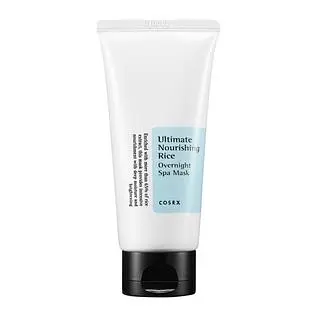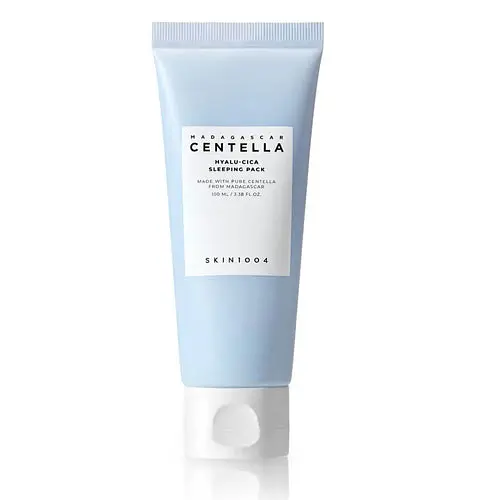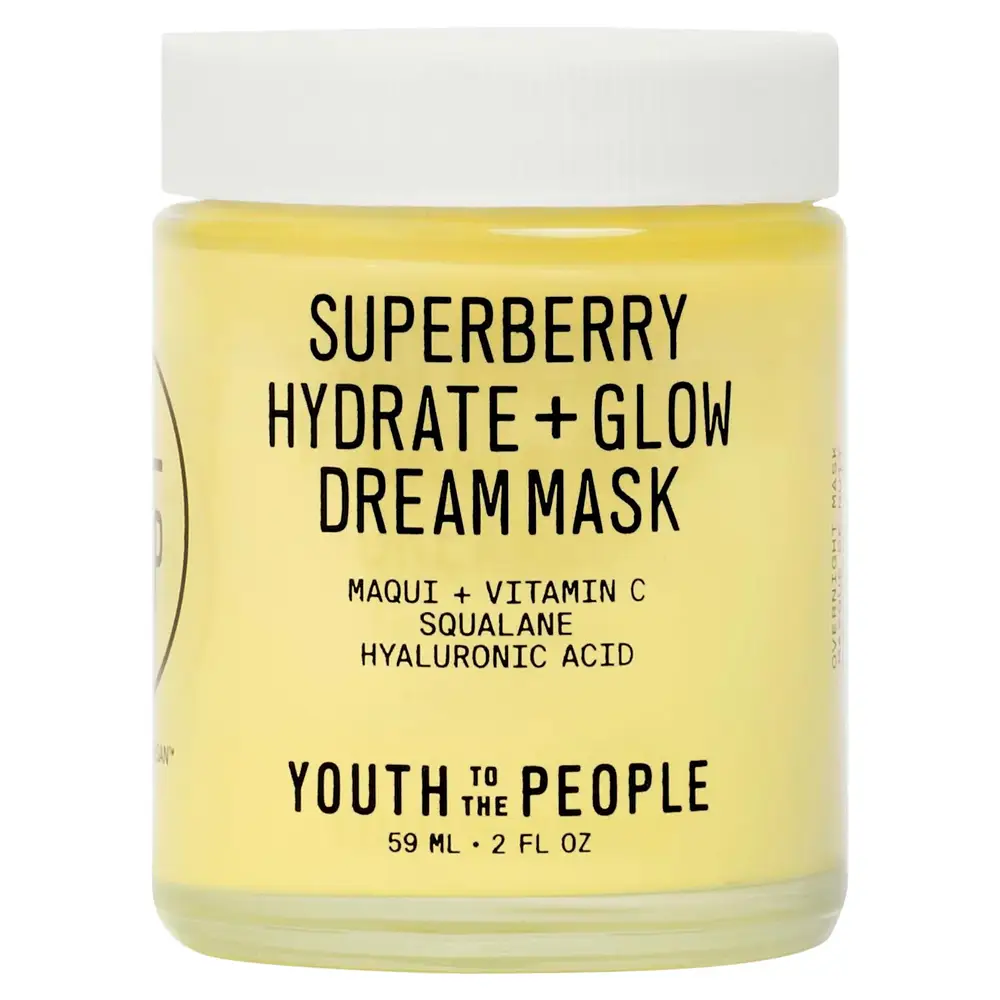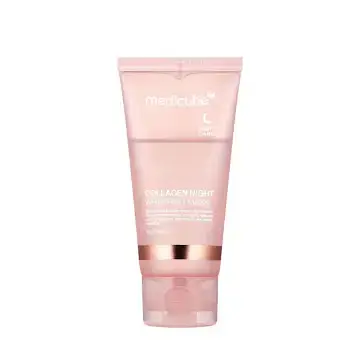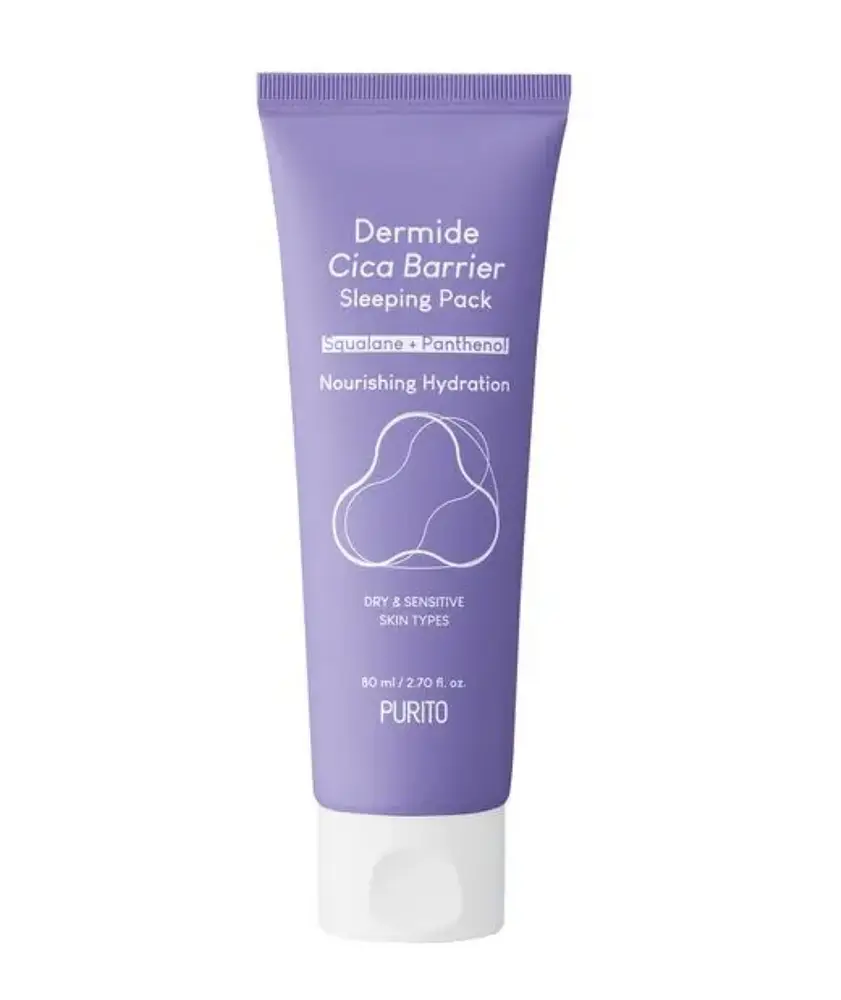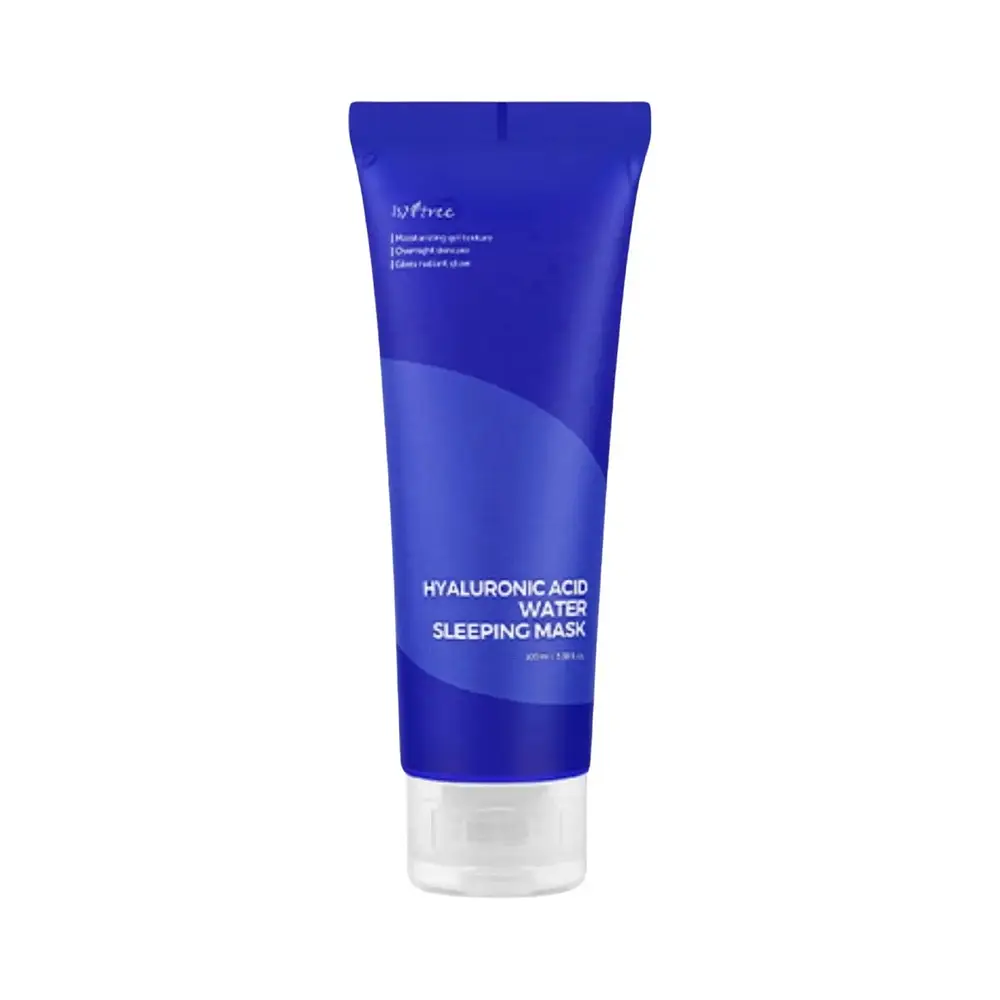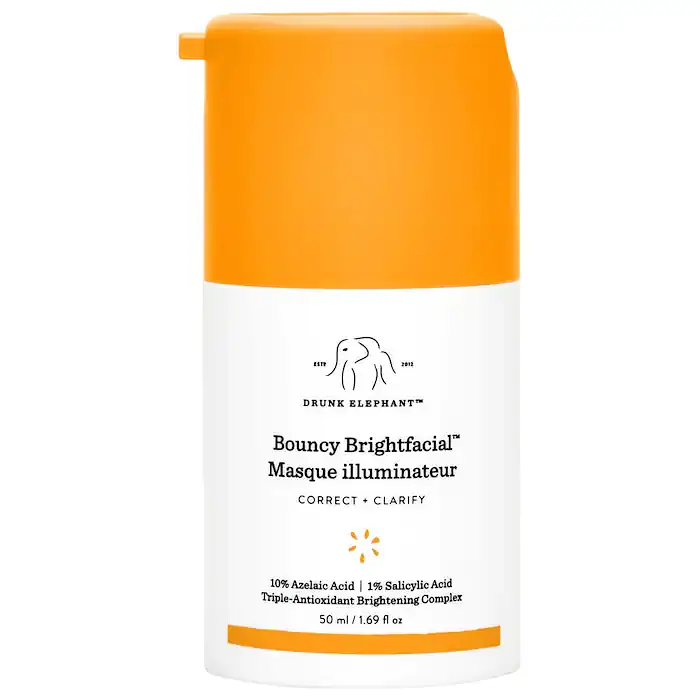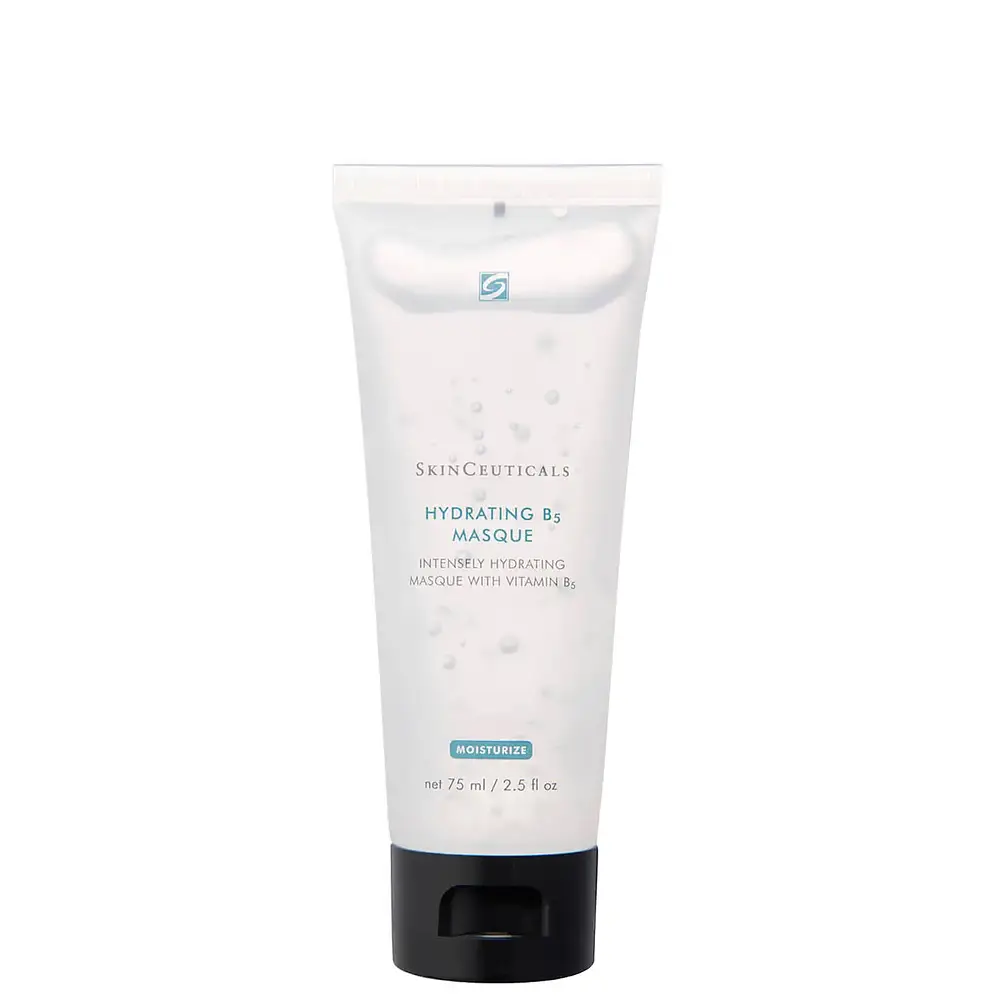Products Scan Our science '%20fill='black'/%3e%3c/svg%3e)
Skincare 
Bath & Body 
Make up 
Trending 
Skincare
Moisturizers
Treatments
Cleansers
Eye Care
Bath & Body
Make up
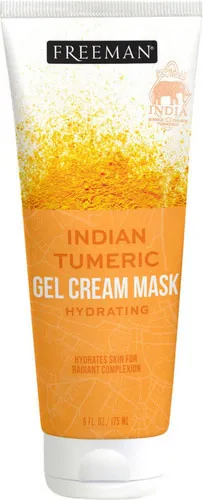
Hover to see details. On mobile? Tap for ingredient stories!
Full Ingredient List (INCI):






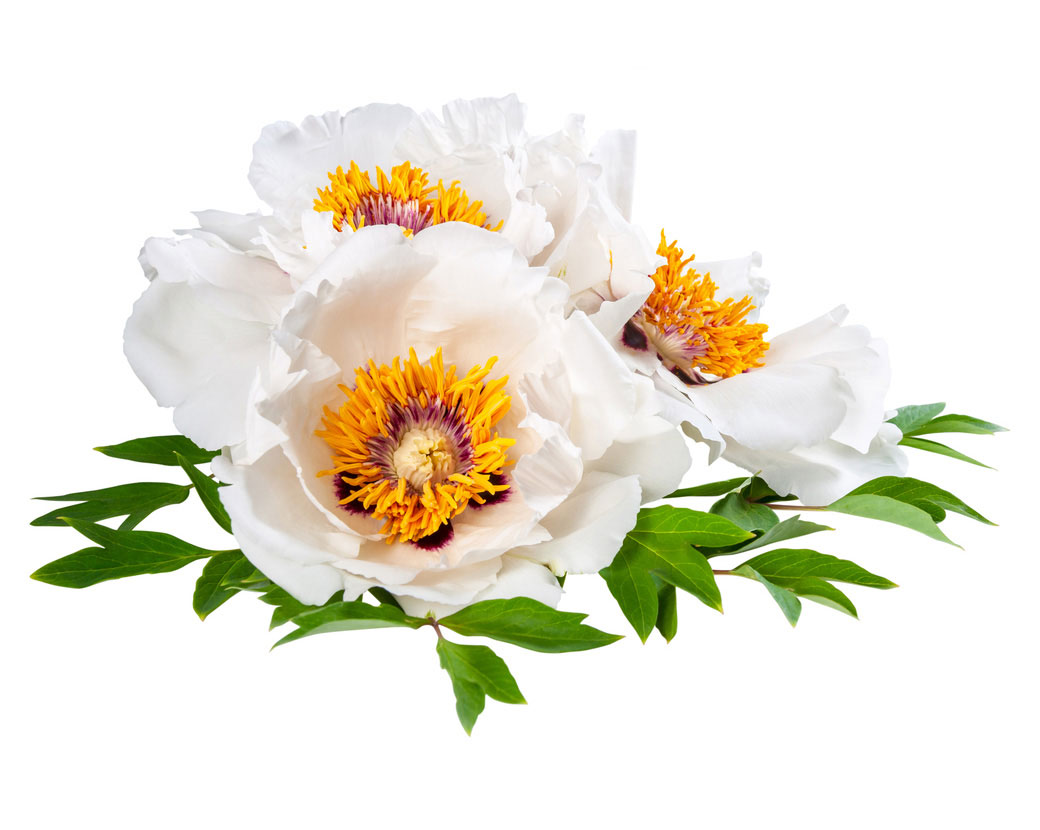











































According to CreamScan analysis, Feeling Beautiful Indian Turmeric Gel Cream Mask is quite moisturizing, with a moisturizing rating of 5.9 out of 10.
Is it more humectant or occlusive? Significantly more humectant. It has a low occlusivity of 2.5 out of 10 and a very high humectancy of 9.3 out of 10, primarily due to the high content of Glycerin (est. ≈7.5%).
This type of moisturizer is ideal for people with combination and oily skin who want maximum hydration in a relatively lightweight, non-greasy formula. It combines a significant amount of humectants with a limited amount of occlusive ingredients to boost moisturizing efficacy without feeling too heavy.
This product may also be a good choice for people with normal skin who prefer fast-absorbing textures, as it balances significant moisturizing potential with a relatively lightweight texture.
But it’s not limited to combination and oily skin - such a humectant boost will also positively contribute to the moisturizing efficacy of any skincare routine when used as a step before applying the main moisturizer. This type of formulation is typically used in serums, where a light, fast-absorbing texture is key.
Please refer to the Ratings section below for details of the moisturizing rating calculation.
📌 Please note that this is not a complete list of benefits. We are in the process of enhancing our model to incorporate anti-pigmentation, exfoliation and anti-acne ratings.
This product contains lactic acid, a popular AHA known for its ability to gently exfoliate and brighten the skin. It works by removing dead skin cells, revealing new, more delicate skin that is more vulnerable to sun damage.
In smaller quantities, lactic acid is often used as a pH adjuster and may not significantly contribute to exfoliation. However, at higher concentrations, it functions as an effective exfoliant with benefits and risks similar to other AHAs. Products with AHAs, including lactic acid, may increase skin sensitivity, making it more prone to sunburn or irritation when exposed to UV rays.
If this product is designed for exfoliation, applying a broad-spectrum sunscreen with at least SPF 30 daily is essential to protect your skin. Always check the label or the manufacturer’s website for specific usage instructions.
|
Est. %
The Estimated % is our algorithm-based assumption about an ingredient's concentration in a formula. Learn more The Estimated % is our algorithm-based assumption about an ingredient's concentration in a formula. Learn more | Ingredient | Origin | Functions | |
|---|---|---|---|---|
| 70 | Water  The most used ingredient in skincare. Its concentration defines the product texture: rich creams may have about 50% of water while a light jelly about 90%. Water doesn’t moisturize the skin by itself and is used in skincare as a solvent for other ingredients. Water  The most used ingredient in skincare. Its concentration defines the product texture: rich creams may have about 50% of water while a light jelly about 90%. Water doesn’t moisturize the skin by itself and is used in skincare as a solvent for other ingredients. | Naturally occurring These are ingredients initially present in nature, such as elements (Zinc, Gold, or Silver), minerals, or water. Naturally occurring These are ingredients initially present in nature, such as elements (Zinc, Gold, or Silver), minerals, or water. | Formula helper
Formula helper
| |
| 7.5 | Glycerin  The most popular moisturizing ingredient in the world. It is a powerful humectant – cheap yet very effective. Glycerin  The most popular moisturizing ingredient in the world. It is a powerful humectant – cheap yet very effective. | Botanical Ingredients derived from plants, mosses, and lichens: extracts, oils, powders, juices and other types of processed plant materials. Botanical Ingredients derived from plants, mosses, and lichens: extracts, oils, powders, juices and other types of processed plant materials. Synthetic All kinds of ingredients formulated or produced by a chemical process, or those that have a chemical modification in their structure. Synthetic All kinds of ingredients formulated or produced by a chemical process, or those that have a chemical modification in their structure. Animal Ingredients derived from animals (including birds, fish, crustaceans, mollusks, and insects) or produced by animals (e.g. dairy- and egg-derived ingredients, bee products, silk, pearls, etc.) Animal Ingredients derived from animals (including birds, fish, crustaceans, mollusks, and insects) or produced by animals (e.g. dairy- and egg-derived ingredients, bee products, silk, pearls, etc.) | Moisturizing (Humectant) Humectants are moisturizing ingredients that draw moisture to the skin, either from deeper layers or from the environment (when it's humid). Moisturizing (Humectant) Humectants are moisturizing ingredients that draw moisture to the skin, either from deeper layers or from the environment (when it's humid). Emollient Emollients fill the micro-cracks in the skin and leave it feeling soft and pleasant to the touch. Emollients are often mistakenly perceived as moisturizing ingredients. Emollient Emollients fill the micro-cracks in the skin and leave it feeling soft and pleasant to the touch. Emollients are often mistakenly perceived as moisturizing ingredients. Fragrance Fragrance ingredients add scent to a product or hide ('mask') the undesired aroma of other ingredients. Fragrance Fragrance ingredients add scent to a product or hide ('mask') the undesired aroma of other ingredients. Formula helper
Formula helper
| |
| 5 | Dimethicone The most common silicone in skincare. It forms a silky, smooth film on the skin’s surface and can help to prevent water loss. It also aids in wound healing and can treat and soften scars. Dimethicone is considered to be very safe for use. Dimethicone The most common silicone in skincare. It forms a silky, smooth film on the skin’s surface and can help to prevent water loss. It also aids in wound healing and can treat and soften scars. Dimethicone is considered to be very safe for use. | Synthetic All kinds of ingredients formulated or produced by a chemical process, or those that have a chemical modification in their structure. Synthetic All kinds of ingredients formulated or produced by a chemical process, or those that have a chemical modification in their structure. | Moisturizing (Occlusive) Occlusives are moisturizing ingredients that seal moisture into the skin, forming a water-resistant barrier. Moisturizing (Occlusive) Occlusives are moisturizing ingredients that seal moisture into the skin, forming a water-resistant barrier. Emollient Emollients fill the micro-cracks in the skin and leave it feeling soft and pleasant to the touch. Emollients are often mistakenly perceived as moisturizing ingredients. Emollient Emollients fill the micro-cracks in the skin and leave it feeling soft and pleasant to the touch. Emollients are often mistakenly perceived as moisturizing ingredients. Formula helper
Formula helper
| |
| 3 | Isopropyl Palmitate  An emollient ester of palmitic acid and isopropanol that gives the skin a smooth, soft, dry, non-oily after-feel. Isopropyl palmitate is listed as a common comedogenic ingredient by acne.org. Isopropyl Palmitate  An emollient ester of palmitic acid and isopropanol that gives the skin a smooth, soft, dry, non-oily after-feel. Isopropyl palmitate is listed as a common comedogenic ingredient by acne.org. | Botanical Ingredients derived from plants, mosses, and lichens: extracts, oils, powders, juices and other types of processed plant materials. Botanical Ingredients derived from plants, mosses, and lichens: extracts, oils, powders, juices and other types of processed plant materials. Synthetic All kinds of ingredients formulated or produced by a chemical process, or those that have a chemical modification in their structure. Synthetic All kinds of ingredients formulated or produced by a chemical process, or those that have a chemical modification in their structure. Animal Ingredients derived from animals (including birds, fish, crustaceans, mollusks, and insects) or produced by animals (e.g. dairy- and egg-derived ingredients, bee products, silk, pearls, etc.) Animal Ingredients derived from animals (including birds, fish, crustaceans, mollusks, and insects) or produced by animals (e.g. dairy- and egg-derived ingredients, bee products, silk, pearls, etc.) | Emollient Emollients fill the micro-cracks in the skin and leave it feeling soft and pleasant to the touch. Emollients are often mistakenly perceived as moisturizing ingredients. Emollient Emollients fill the micro-cracks in the skin and leave it feeling soft and pleasant to the touch. Emollients are often mistakenly perceived as moisturizing ingredients. Fragrance Fragrance ingredients add scent to a product or hide ('mask') the undesired aroma of other ingredients. Fragrance Fragrance ingredients add scent to a product or hide ('mask') the undesired aroma of other ingredients. Formula helper
Formula helper
| |
| 2.5 | Paeonia Albiflora Root Extract  An extract from the roots of the garden peony. It mainly contains humectant moisturizing oligosaccharides and polysaccharides, and has been claimed to improve skin tone. Paeonia Albiflora Root Extract  An extract from the roots of the garden peony. It mainly contains humectant moisturizing oligosaccharides and polysaccharides, and has been claimed to improve skin tone. | Botanical Ingredients derived from plants, mosses, and lichens: extracts, oils, powders, juices and other types of processed plant materials. Botanical Ingredients derived from plants, mosses, and lichens: extracts, oils, powders, juices and other types of processed plant materials. | Anti-Pigmentation Anti-pigmentation ingredients help to even skin tone by reducing the intensity of dark spots and hyperpigmentation. Anti-Pigmentation Anti-pigmentation ingredients help to even skin tone by reducing the intensity of dark spots and hyperpigmentation. | |
| 2 | | Botanical Ingredients derived from plants, mosses, and lichens: extracts, oils, powders, juices and other types of processed plant materials. Botanical Ingredients derived from plants, mosses, and lichens: extracts, oils, powders, juices and other types of processed plant materials. | Soothing Soothing ingredients reduce the signs of sensitivity in irritated and inflamed skin. This includes anti-inflammatory ingredients, anti-itch agents, and topical analgesics. Soothing Soothing ingredients reduce the signs of sensitivity in irritated and inflamed skin. This includes anti-inflammatory ingredients, anti-itch agents, and topical analgesics. Fragrance Fragrance ingredients add scent to a product or hide ('mask') the undesired aroma of other ingredients. Fragrance Fragrance ingredients add scent to a product or hide ('mask') the undesired aroma of other ingredients. | |
| 1.5 | Sodium Hyaluronate  A sodium salt of famous hyaluronic acid. A potent humectant that hydrates the skin, supports collagen function, and fills out small wrinkles. Sodium hyaluronate also offers soothing and antioxidant properties. Sodium Hyaluronate  A sodium salt of famous hyaluronic acid. A potent humectant that hydrates the skin, supports collagen function, and fills out small wrinkles. Sodium hyaluronate also offers soothing and antioxidant properties. | Biotech The biotech origin of the ingredient implies that it was made in a lab using cultured microorganisms (bacteria or fungi) and a substrate (e.g. through the fermentation process), and then extracted and/or purified. Biotech The biotech origin of the ingredient implies that it was made in a lab using cultured microorganisms (bacteria or fungi) and a substrate (e.g. through the fermentation process), and then extracted and/or purified. Animal Ingredients derived from animals (including birds, fish, crustaceans, mollusks, and insects) or produced by animals (e.g. dairy- and egg-derived ingredients, bee products, silk, pearls, etc.) Animal Ingredients derived from animals (including birds, fish, crustaceans, mollusks, and insects) or produced by animals (e.g. dairy- and egg-derived ingredients, bee products, silk, pearls, etc.) | Moisturizing (Humectant) Humectants are moisturizing ingredients that draw moisture to the skin, either from deeper layers or from the environment (when it's humid). Moisturizing (Humectant) Humectants are moisturizing ingredients that draw moisture to the skin, either from deeper layers or from the environment (when it's humid). Antioxidant Antioxidants reduce the oxidative stress caused by free radicals and prevent accelerated skin aging. Antioxidant Antioxidants reduce the oxidative stress caused by free radicals and prevent accelerated skin aging. | |
| 1.3 | Curcuma Longa (Turmeric) Root Extract  An extract derived from the thick roots of curcuma (turmeric), a famous yellow spice and a major ingredient in curry powder. It is used in skincare for its proven antioxidant and anti-inflammatory properties. Curcuma Longa (Turmeric) Root Extract  An extract derived from the thick roots of curcuma (turmeric), a famous yellow spice and a major ingredient in curry powder. It is used in skincare for its proven antioxidant and anti-inflammatory properties. | Botanical Ingredients derived from plants, mosses, and lichens: extracts, oils, powders, juices and other types of processed plant materials. Botanical Ingredients derived from plants, mosses, and lichens: extracts, oils, powders, juices and other types of processed plant materials. | Antioxidant Antioxidants reduce the oxidative stress caused by free radicals and prevent accelerated skin aging. Antioxidant Antioxidants reduce the oxidative stress caused by free radicals and prevent accelerated skin aging. Soothing Soothing ingredients reduce the signs of sensitivity in irritated and inflamed skin. This includes anti-inflammatory ingredients, anti-itch agents, and topical analgesics. Soothing Soothing ingredients reduce the signs of sensitivity in irritated and inflamed skin. This includes anti-inflammatory ingredients, anti-itch agents, and topical analgesics. Anti-Pigmentation Anti-pigmentation ingredients help to even skin tone by reducing the intensity of dark spots and hyperpigmentation. Anti-Pigmentation Anti-pigmentation ingredients help to even skin tone by reducing the intensity of dark spots and hyperpigmentation. Fragrance Fragrance ingredients add scent to a product or hide ('mask') the undesired aroma of other ingredients. Fragrance Fragrance ingredients add scent to a product or hide ('mask') the undesired aroma of other ingredients. | |
| 1 | Lavandula Angustifolia (Lavender) Oil  An essential oil derived from common, or true, lavender. It is used in skincare for its lovely, calming scent. Like all essential oils, however, it may cause a contact skin allergy in more sensitive individuals. Lavandula Angustifolia (Lavender) Oil  An essential oil derived from common, or true, lavender. It is used in skincare for its lovely, calming scent. Like all essential oils, however, it may cause a contact skin allergy in more sensitive individuals. | Botanical Ingredients derived from plants, mosses, and lichens: extracts, oils, powders, juices and other types of processed plant materials. Botanical Ingredients derived from plants, mosses, and lichens: extracts, oils, powders, juices and other types of processed plant materials. | Fragrance Fragrance ingredients add scent to a product or hide ('mask') the undesired aroma of other ingredients. Fragrance Fragrance ingredients add scent to a product or hide ('mask') the undesired aroma of other ingredients. | |
| 0.3 | Sorbitan Stearate  A vegetable-derived ingredient most commonly used as an emulsifier to stabilize water and oil mixtures. Sorbitan Stearate  A vegetable-derived ingredient most commonly used as an emulsifier to stabilize water and oil mixtures. | Botanical Ingredients derived from plants, mosses, and lichens: extracts, oils, powders, juices and other types of processed plant materials. Botanical Ingredients derived from plants, mosses, and lichens: extracts, oils, powders, juices and other types of processed plant materials. Synthetic All kinds of ingredients formulated or produced by a chemical process, or those that have a chemical modification in their structure. Synthetic All kinds of ingredients formulated or produced by a chemical process, or those that have a chemical modification in their structure. Animal Ingredients derived from animals (including birds, fish, crustaceans, mollusks, and insects) or produced by animals (e.g. dairy- and egg-derived ingredients, bee products, silk, pearls, etc.) Animal Ingredients derived from animals (including birds, fish, crustaceans, mollusks, and insects) or produced by animals (e.g. dairy- and egg-derived ingredients, bee products, silk, pearls, etc.) | Fragrance Fragrance ingredients add scent to a product or hide ('mask') the undesired aroma of other ingredients. Fragrance Fragrance ingredients add scent to a product or hide ('mask') the undesired aroma of other ingredients. Formula helper
Formula helper
| |
| 0.3 | PEG-100 Stearate  This surfactant is more specifically classified as an emulsifier that produces oil-in-water emulsions. PEG-100 stearate can also be used as a cleansing agent. PEG-100 Stearate  This surfactant is more specifically classified as an emulsifier that produces oil-in-water emulsions. PEG-100 stearate can also be used as a cleansing agent. | Synthetic All kinds of ingredients formulated or produced by a chemical process, or those that have a chemical modification in their structure. Synthetic All kinds of ingredients formulated or produced by a chemical process, or those that have a chemical modification in their structure. | Cleansing Cleansing ingredients, also known as surfactants, clear dirt and buildup from the skin. Cleansing Cleansing ingredients, also known as surfactants, clear dirt and buildup from the skin. Formula helper
Formula helper
| |
| 0.3 | Carbomer  A synthetic ingredient with the ability to gel water. When used in emulsions, such as lotions and creams, carbomer can also act as an emulsion stabilizer. Carbomer  A synthetic ingredient with the ability to gel water. When used in emulsions, such as lotions and creams, carbomer can also act as an emulsion stabilizer. | Synthetic All kinds of ingredients formulated or produced by a chemical process, or those that have a chemical modification in their structure. Synthetic All kinds of ingredients formulated or produced by a chemical process, or those that have a chemical modification in their structure. | Formula helper
Formula helper
| |
| 0.3 | Tetrasodium EDTA  One of the most common synthetic chelators. It can reduce the 'hardness' of water and so is often used in rinse-off products. Tetrasodium EDTA  One of the most common synthetic chelators. It can reduce the 'hardness' of water and so is often used in rinse-off products. | Synthetic All kinds of ingredients formulated or produced by a chemical process, or those that have a chemical modification in their structure. Synthetic All kinds of ingredients formulated or produced by a chemical process, or those that have a chemical modification in their structure. | Formula helper
Formula helper
| |
| 0.3 | Aminomethyl Propanol  A synthetic ingredient that helps to adjust the pH of a product to make it less acidic. Aminomethyl Propanol  A synthetic ingredient that helps to adjust the pH of a product to make it less acidic. | Synthetic All kinds of ingredients formulated or produced by a chemical process, or those that have a chemical modification in their structure. Synthetic All kinds of ingredients formulated or produced by a chemical process, or those that have a chemical modification in their structure. | Formula helper
Formula helper
| |
| 0.3 | Phenoxyethanol  The most frequently used preservative in skincare. It is a clear, oil-like liquid synthetic substance that protects products from harmful bacteria and yeast, whilst still leaving skin microflora unharmed. It is confirmed by research to be harmless. Phenoxyethanol  The most frequently used preservative in skincare. It is a clear, oil-like liquid synthetic substance that protects products from harmful bacteria and yeast, whilst still leaving skin microflora unharmed. It is confirmed by research to be harmless. | Synthetic All kinds of ingredients formulated or produced by a chemical process, or those that have a chemical modification in their structure. Synthetic All kinds of ingredients formulated or produced by a chemical process, or those that have a chemical modification in their structure. | Antimicrobial Antimicrobials prevent the growth of harmful microorganisms on the skin. Antimicrobial Antimicrobials prevent the growth of harmful microorganisms on the skin. Preservative Preservatives prevent the growth of bacteria and fungi in a product. Preservative Preservatives prevent the growth of bacteria and fungi in a product. | |
| 0.3 | Diazolidinyl Urea  A synthetic preservative that is effective against most common bacteria. It is not considered broad-spectrum because it does not act against any type of yeast or mold. It is therefore commonly paired with antifungal preservatives. Diazolidinyl Urea  A synthetic preservative that is effective against most common bacteria. It is not considered broad-spectrum because it does not act against any type of yeast or mold. It is therefore commonly paired with antifungal preservatives. | Synthetic All kinds of ingredients formulated or produced by a chemical process, or those that have a chemical modification in their structure. Synthetic All kinds of ingredients formulated or produced by a chemical process, or those that have a chemical modification in their structure. | Preservative Preservatives prevent the growth of bacteria and fungi in a product. Preservative Preservatives prevent the growth of bacteria and fungi in a product. | |
| 0.3 | Chlorphenesin  A preservative and broad-spectrum antimicrobial agent that protects products from a wide range of bacteria and fungi. Chlorphenesin  A preservative and broad-spectrum antimicrobial agent that protects products from a wide range of bacteria and fungi. | Synthetic All kinds of ingredients formulated or produced by a chemical process, or those that have a chemical modification in their structure. Synthetic All kinds of ingredients formulated or produced by a chemical process, or those that have a chemical modification in their structure. | Antimicrobial Antimicrobials prevent the growth of harmful microorganisms on the skin. Antimicrobial Antimicrobials prevent the growth of harmful microorganisms on the skin. Preservative Preservatives prevent the growth of bacteria and fungi in a product. Preservative Preservatives prevent the growth of bacteria and fungi in a product. | |
| 0.3 | Sodium Benzoate  A preservative that usually works in combination with other preservatives. It has to be at low pH (<5.5) to be effective. Sodium Benzoate  A preservative that usually works in combination with other preservatives. It has to be at low pH (<5.5) to be effective. | Synthetic All kinds of ingredients formulated or produced by a chemical process, or those that have a chemical modification in their structure. Synthetic All kinds of ingredients formulated or produced by a chemical process, or those that have a chemical modification in their structure. | Fragrance Fragrance ingredients add scent to a product or hide ('mask') the undesired aroma of other ingredients. Fragrance Fragrance ingredients add scent to a product or hide ('mask') the undesired aroma of other ingredients. Preservative Preservatives prevent the growth of bacteria and fungi in a product. Preservative Preservatives prevent the growth of bacteria and fungi in a product. Formula helper
Formula helper
| |
| 0.3 | Lactic Acid  The most popular AHA in skincare and less irritating than glycolic acid. It can be naturally found in sour milk. It is a humectant moisturizing, pH stabilizing, and gently exfoliating ingredient, able to soften dry, cracked, and peeling skin. Lactic Acid  The most popular AHA in skincare and less irritating than glycolic acid. It can be naturally found in sour milk. It is a humectant moisturizing, pH stabilizing, and gently exfoliating ingredient, able to soften dry, cracked, and peeling skin. | Botanical Ingredients derived from plants, mosses, and lichens: extracts, oils, powders, juices and other types of processed plant materials. Botanical Ingredients derived from plants, mosses, and lichens: extracts, oils, powders, juices and other types of processed plant materials. Synthetic All kinds of ingredients formulated or produced by a chemical process, or those that have a chemical modification in their structure. Synthetic All kinds of ingredients formulated or produced by a chemical process, or those that have a chemical modification in their structure. Animal Ingredients derived from animals (including birds, fish, crustaceans, mollusks, and insects) or produced by animals (e.g. dairy- and egg-derived ingredients, bee products, silk, pearls, etc.) Animal Ingredients derived from animals (including birds, fish, crustaceans, mollusks, and insects) or produced by animals (e.g. dairy- and egg-derived ingredients, bee products, silk, pearls, etc.) | Moisturizing (Humectant) Humectants are moisturizing ingredients that draw moisture to the skin, either from deeper layers or from the environment (when it's humid). Moisturizing (Humectant) Humectants are moisturizing ingredients that draw moisture to the skin, either from deeper layers or from the environment (when it's humid). Exfoliant Exfoliants remove dead skin cells from the surface of the skin via acid-based chemical reactions (e.g., AHA or BHA). Exfoliant Exfoliants remove dead skin cells from the surface of the skin via acid-based chemical reactions (e.g., AHA or BHA). Anti-Pigmentation Anti-pigmentation ingredients help to even skin tone by reducing the intensity of dark spots and hyperpigmentation. Anti-Pigmentation Anti-pigmentation ingredients help to even skin tone by reducing the intensity of dark spots and hyperpigmentation. Fragrance Fragrance ingredients add scent to a product or hide ('mask') the undesired aroma of other ingredients. Fragrance Fragrance ingredients add scent to a product or hide ('mask') the undesired aroma of other ingredients. Formula helper
Formula helper
| |
| 0.3 | Fragrance  Under trade secret law, manufacturers have the right not to disclose what exactly went into the fragrance and use the unspecific word Fragrance or Parfum instead. Many fragrances are highly allergenic. Fragrance  Under trade secret law, manufacturers have the right not to disclose what exactly went into the fragrance and use the unspecific word Fragrance or Parfum instead. Many fragrances are highly allergenic. | Botanical Ingredients derived from plants, mosses, and lichens: extracts, oils, powders, juices and other types of processed plant materials. Botanical Ingredients derived from plants, mosses, and lichens: extracts, oils, powders, juices and other types of processed plant materials. Synthetic All kinds of ingredients formulated or produced by a chemical process, or those that have a chemical modification in their structure. Synthetic All kinds of ingredients formulated or produced by a chemical process, or those that have a chemical modification in their structure. Animal Ingredients derived from animals (including birds, fish, crustaceans, mollusks, and insects) or produced by animals (e.g. dairy- and egg-derived ingredients, bee products, silk, pearls, etc.) Animal Ingredients derived from animals (including birds, fish, crustaceans, mollusks, and insects) or produced by animals (e.g. dairy- and egg-derived ingredients, bee products, silk, pearls, etc.) | Fragrance Fragrance ingredients add scent to a product or hide ('mask') the undesired aroma of other ingredients. Fragrance Fragrance ingredients add scent to a product or hide ('mask') the undesired aroma of other ingredients. | |
| 0.3 | Coumarin  A plant-based fragrant compound that occurs in sweet-smelling grass, sweet woodruff, and sweet clover. It has a sweet and vanilla-like scent in high concentrations and a similar scent to freshly mowed grass in low concentrations. Coumarin  A plant-based fragrant compound that occurs in sweet-smelling grass, sweet woodruff, and sweet clover. It has a sweet and vanilla-like scent in high concentrations and a similar scent to freshly mowed grass in low concentrations. | Botanical Ingredients derived from plants, mosses, and lichens: extracts, oils, powders, juices and other types of processed plant materials. Botanical Ingredients derived from plants, mosses, and lichens: extracts, oils, powders, juices and other types of processed plant materials. Synthetic All kinds of ingredients formulated or produced by a chemical process, or those that have a chemical modification in their structure. Synthetic All kinds of ingredients formulated or produced by a chemical process, or those that have a chemical modification in their structure. | Fragrance Fragrance ingredients add scent to a product or hide ('mask') the undesired aroma of other ingredients. Fragrance Fragrance ingredients add scent to a product or hide ('mask') the undesired aroma of other ingredients. | |
| 0.3 | Linalool  A fragrant, volatile compound naturally present in many essential oils. It has a pleasant scent and is often used in skincare products as a fragrance. People with sensitive skin should try to avoid it, or at least do a patch test before using it. Linalool  A fragrant, volatile compound naturally present in many essential oils. It has a pleasant scent and is often used in skincare products as a fragrance. People with sensitive skin should try to avoid it, or at least do a patch test before using it. | Botanical Ingredients derived from plants, mosses, and lichens: extracts, oils, powders, juices and other types of processed plant materials. Botanical Ingredients derived from plants, mosses, and lichens: extracts, oils, powders, juices and other types of processed plant materials. Synthetic All kinds of ingredients formulated or produced by a chemical process, or those that have a chemical modification in their structure. Synthetic All kinds of ingredients formulated or produced by a chemical process, or those that have a chemical modification in their structure. | Fragrance Fragrance ingredients add scent to a product or hide ('mask') the undesired aroma of other ingredients. Fragrance Fragrance ingredients add scent to a product or hide ('mask') the undesired aroma of other ingredients. | |
| 0.3 | Alpha-Isomethyl Ionone  A fragrance ingredient that is supplied as a pale, yellow liquid. The scent it emits is very clean and features notes of violet and orris. Alpha-isomethyl is also used as a flavoring agent in lip care products and even in some foods and drinks. Alpha-Isomethyl Ionone  A fragrance ingredient that is supplied as a pale, yellow liquid. The scent it emits is very clean and features notes of violet and orris. Alpha-isomethyl is also used as a flavoring agent in lip care products and even in some foods and drinks. | Synthetic All kinds of ingredients formulated or produced by a chemical process, or those that have a chemical modification in their structure. Synthetic All kinds of ingredients formulated or produced by a chemical process, or those that have a chemical modification in their structure. | Fragrance Fragrance ingredients add scent to a product or hide ('mask') the undesired aroma of other ingredients. Fragrance Fragrance ingredients add scent to a product or hide ('mask') the undesired aroma of other ingredients. Flavor Flavor ingredients bring sweetness to a product or are used to recreate various tastes. Flavor Flavor ingredients bring sweetness to a product or are used to recreate various tastes. | |
| 0.3 | Blue 1 (CI 42090)  A synthetic dye commonly known as Brilliant Blue FCF that produces rich blue colors for various cosmetic uses. FD&C Blue #1 can also be found in foods, medications, and dietary supplements, as it is considered non-toxic and safe for use. Blue 1 (CI 42090)  A synthetic dye commonly known as Brilliant Blue FCF that produces rich blue colors for various cosmetic uses. FD&C Blue #1 can also be found in foods, medications, and dietary supplements, as it is considered non-toxic and safe for use. | Synthetic All kinds of ingredients formulated or produced by a chemical process, or those that have a chemical modification in their structure. Synthetic All kinds of ingredients formulated or produced by a chemical process, or those that have a chemical modification in their structure. | Colorant Colorants give color to skincare products. Colorant Colorants give color to skincare products. | |
| 0.3 | | Synthetic All kinds of ingredients formulated or produced by a chemical process, or those that have a chemical modification in their structure. Synthetic All kinds of ingredients formulated or produced by a chemical process, or those that have a chemical modification in their structure. | Colorant Colorants give color to skincare products. Colorant Colorants give color to skincare products. | |
| 0.3 | Yellow 5 (CI 19140)  A bright yellow colorant that is often also listed as FD&C Yellow 5. Yellow 5 (CI 19140)  A bright yellow colorant that is often also listed as FD&C Yellow 5. | Synthetic All kinds of ingredients formulated or produced by a chemical process, or those that have a chemical modification in their structure. Synthetic All kinds of ingredients formulated or produced by a chemical process, or those that have a chemical modification in their structure. | Colorant Colorants give color to skincare products. Colorant Colorants give color to skincare products. | |
| 70  Water Function: Formula helper Formula helper
Formula helper Formula helper
Origin: Naturally occurring Naturally occurring These are ingredients initially present in nature, such as elements (Zinc, Gold, or Silver), minerals, or water. Naturally occurring Naturally occurring These are ingredients initially present in nature, such as elements (Zinc, Gold, or Silver), minerals, or water. |
| 7.5  Glycerin Function: Moisturizing (Humectant), Moisturizing (Humectant) Humectants are moisturizing ingredients that draw moisture to the skin, either from deeper layers or from the environment (when it's humid). Moisturizing (Humectant), Moisturizing (Humectant) Humectants are moisturizing ingredients that draw moisture to the skin, either from deeper layers or from the environment (when it's humid). Emollient, Emollient Emollients fill the micro-cracks in the skin and leave it feeling soft and pleasant to the touch. Emollients are often mistakenly perceived as moisturizing ingredients. Emollient, Emollient Emollients fill the micro-cracks in the skin and leave it feeling soft and pleasant to the touch. Emollients are often mistakenly perceived as moisturizing ingredients. Fragrance, Fragrance Fragrance ingredients add scent to a product or hide ('mask') the undesired aroma of other ingredients. Fragrance, Fragrance Fragrance ingredients add scent to a product or hide ('mask') the undesired aroma of other ingredients. Formula helper Formula helper
Formula helper Formula helper
Origin: Botanical, Botanical Ingredients derived from plants, mosses, and lichens: extracts, oils, powders, juices and other types of processed plant materials. Botanical, Botanical Ingredients derived from plants, mosses, and lichens: extracts, oils, powders, juices and other types of processed plant materials. Synthetic, Synthetic All kinds of ingredients formulated or produced by a chemical process, or those that have a chemical modification in their structure. Synthetic, Synthetic All kinds of ingredients formulated or produced by a chemical process, or those that have a chemical modification in their structure. Animal Animal Ingredients derived from animals (including birds, fish, crustaceans, mollusks, and insects) or produced by animals (e.g. dairy- and egg-derived ingredients, bee products, silk, pearls, etc.) Animal Animal Ingredients derived from animals (including birds, fish, crustaceans, mollusks, and insects) or produced by animals (e.g. dairy- and egg-derived ingredients, bee products, silk, pearls, etc.) |
| 5 Dimethicone Function: Moisturizing (Occlusive), Moisturizing (Occlusive) Occlusives are moisturizing ingredients that seal moisture into the skin, forming a water-resistant barrier. Moisturizing (Occlusive), Moisturizing (Occlusive) Occlusives are moisturizing ingredients that seal moisture into the skin, forming a water-resistant barrier. Emollient, Emollient Emollients fill the micro-cracks in the skin and leave it feeling soft and pleasant to the touch. Emollients are often mistakenly perceived as moisturizing ingredients. Emollient, Emollient Emollients fill the micro-cracks in the skin and leave it feeling soft and pleasant to the touch. Emollients are often mistakenly perceived as moisturizing ingredients. Formula helper Formula helper
Formula helper Formula helper
Origin: Synthetic Synthetic All kinds of ingredients formulated or produced by a chemical process, or those that have a chemical modification in their structure. Synthetic Synthetic All kinds of ingredients formulated or produced by a chemical process, or those that have a chemical modification in their structure. |
| 3  Isopropyl Palmitate Function: Emollient, Emollient Emollients fill the micro-cracks in the skin and leave it feeling soft and pleasant to the touch. Emollients are often mistakenly perceived as moisturizing ingredients. Emollient, Emollient Emollients fill the micro-cracks in the skin and leave it feeling soft and pleasant to the touch. Emollients are often mistakenly perceived as moisturizing ingredients. Fragrance, Fragrance Fragrance ingredients add scent to a product or hide ('mask') the undesired aroma of other ingredients. Fragrance, Fragrance Fragrance ingredients add scent to a product or hide ('mask') the undesired aroma of other ingredients. Formula helper Formula helper
Formula helper Formula helper
Origin: Botanical, Botanical Ingredients derived from plants, mosses, and lichens: extracts, oils, powders, juices and other types of processed plant materials. Botanical, Botanical Ingredients derived from plants, mosses, and lichens: extracts, oils, powders, juices and other types of processed plant materials. Synthetic, Synthetic All kinds of ingredients formulated or produced by a chemical process, or those that have a chemical modification in their structure. Synthetic, Synthetic All kinds of ingredients formulated or produced by a chemical process, or those that have a chemical modification in their structure. Animal Animal Ingredients derived from animals (including birds, fish, crustaceans, mollusks, and insects) or produced by animals (e.g. dairy- and egg-derived ingredients, bee products, silk, pearls, etc.) Animal Animal Ingredients derived from animals (including birds, fish, crustaceans, mollusks, and insects) or produced by animals (e.g. dairy- and egg-derived ingredients, bee products, silk, pearls, etc.) |
| 2.5  Paeonia Albiflora Root Extract Function: Anti-Pigmentation Anti-Pigmentation Anti-pigmentation ingredients help to even skin tone by reducing the intensity of dark spots and hyperpigmentation. Anti-Pigmentation Anti-Pigmentation Anti-pigmentation ingredients help to even skin tone by reducing the intensity of dark spots and hyperpigmentation. Origin: Botanical Botanical Ingredients derived from plants, mosses, and lichens: extracts, oils, powders, juices and other types of processed plant materials. Botanical Botanical Ingredients derived from plants, mosses, and lichens: extracts, oils, powders, juices and other types of processed plant materials. |
| 2  Marrubium Vulgare Extract Function: Soothing, Soothing Soothing ingredients reduce the signs of sensitivity in irritated and inflamed skin. This includes anti-inflammatory ingredients, anti-itch agents, and topical analgesics. Soothing, Soothing Soothing ingredients reduce the signs of sensitivity in irritated and inflamed skin. This includes anti-inflammatory ingredients, anti-itch agents, and topical analgesics. Fragrance Fragrance Fragrance ingredients add scent to a product or hide ('mask') the undesired aroma of other ingredients. Fragrance Fragrance Fragrance ingredients add scent to a product or hide ('mask') the undesired aroma of other ingredients. Origin: Botanical Botanical Ingredients derived from plants, mosses, and lichens: extracts, oils, powders, juices and other types of processed plant materials. Botanical Botanical Ingredients derived from plants, mosses, and lichens: extracts, oils, powders, juices and other types of processed plant materials. |
| 1.5  Sodium Hyaluronate Function: Moisturizing (Humectant), Moisturizing (Humectant) Humectants are moisturizing ingredients that draw moisture to the skin, either from deeper layers or from the environment (when it's humid). Moisturizing (Humectant), Moisturizing (Humectant) Humectants are moisturizing ingredients that draw moisture to the skin, either from deeper layers or from the environment (when it's humid). Antioxidant Antioxidant Antioxidants reduce the oxidative stress caused by free radicals and prevent accelerated skin aging. Antioxidant Antioxidant Antioxidants reduce the oxidative stress caused by free radicals and prevent accelerated skin aging. Origin: Biotech, Biotech The biotech origin of the ingredient implies that it was made in a lab using cultured microorganisms (bacteria or fungi) and a substrate (e.g. through the fermentation process), and then extracted and/or purified. Biotech, Biotech The biotech origin of the ingredient implies that it was made in a lab using cultured microorganisms (bacteria or fungi) and a substrate (e.g. through the fermentation process), and then extracted and/or purified. Animal Animal Ingredients derived from animals (including birds, fish, crustaceans, mollusks, and insects) or produced by animals (e.g. dairy- and egg-derived ingredients, bee products, silk, pearls, etc.) Animal Animal Ingredients derived from animals (including birds, fish, crustaceans, mollusks, and insects) or produced by animals (e.g. dairy- and egg-derived ingredients, bee products, silk, pearls, etc.) |
| 1.3  Curcuma Longa (Turmeric) Root Extract Function: Antioxidant, Antioxidant Antioxidants reduce the oxidative stress caused by free radicals and prevent accelerated skin aging. Antioxidant, Antioxidant Antioxidants reduce the oxidative stress caused by free radicals and prevent accelerated skin aging. Soothing, Soothing Soothing ingredients reduce the signs of sensitivity in irritated and inflamed skin. This includes anti-inflammatory ingredients, anti-itch agents, and topical analgesics. Soothing, Soothing Soothing ingredients reduce the signs of sensitivity in irritated and inflamed skin. This includes anti-inflammatory ingredients, anti-itch agents, and topical analgesics. Anti-Pigmentation, Anti-Pigmentation Anti-pigmentation ingredients help to even skin tone by reducing the intensity of dark spots and hyperpigmentation. Anti-Pigmentation, Anti-Pigmentation Anti-pigmentation ingredients help to even skin tone by reducing the intensity of dark spots and hyperpigmentation. Fragrance Fragrance Fragrance ingredients add scent to a product or hide ('mask') the undesired aroma of other ingredients. Fragrance Fragrance Fragrance ingredients add scent to a product or hide ('mask') the undesired aroma of other ingredients. Origin: Botanical Botanical Ingredients derived from plants, mosses, and lichens: extracts, oils, powders, juices and other types of processed plant materials. Botanical Botanical Ingredients derived from plants, mosses, and lichens: extracts, oils, powders, juices and other types of processed plant materials. |
| 1  Lavandula Angustifolia (Lavender) Oil Function: Fragrance Fragrance Fragrance ingredients add scent to a product or hide ('mask') the undesired aroma of other ingredients. Fragrance Fragrance Fragrance ingredients add scent to a product or hide ('mask') the undesired aroma of other ingredients. Origin: Botanical Botanical Ingredients derived from plants, mosses, and lichens: extracts, oils, powders, juices and other types of processed plant materials. Botanical Botanical Ingredients derived from plants, mosses, and lichens: extracts, oils, powders, juices and other types of processed plant materials. |
| 0.3  Sorbitan Stearate Function: Fragrance, Fragrance Fragrance ingredients add scent to a product or hide ('mask') the undesired aroma of other ingredients. Fragrance, Fragrance Fragrance ingredients add scent to a product or hide ('mask') the undesired aroma of other ingredients. Formula helper Formula helper
Formula helper Formula helper
Origin: Botanical, Botanical Ingredients derived from plants, mosses, and lichens: extracts, oils, powders, juices and other types of processed plant materials. Botanical, Botanical Ingredients derived from plants, mosses, and lichens: extracts, oils, powders, juices and other types of processed plant materials. Synthetic, Synthetic All kinds of ingredients formulated or produced by a chemical process, or those that have a chemical modification in their structure. Synthetic, Synthetic All kinds of ingredients formulated or produced by a chemical process, or those that have a chemical modification in their structure. Animal Animal Ingredients derived from animals (including birds, fish, crustaceans, mollusks, and insects) or produced by animals (e.g. dairy- and egg-derived ingredients, bee products, silk, pearls, etc.) Animal Animal Ingredients derived from animals (including birds, fish, crustaceans, mollusks, and insects) or produced by animals (e.g. dairy- and egg-derived ingredients, bee products, silk, pearls, etc.) |
| 0.3  PEG-100 Stearate Function: Cleansing, Cleansing Cleansing ingredients, also known as surfactants, clear dirt and buildup from the skin. Cleansing, Cleansing Cleansing ingredients, also known as surfactants, clear dirt and buildup from the skin. Formula helper Formula helper
Formula helper Formula helper
Origin: Synthetic Synthetic All kinds of ingredients formulated or produced by a chemical process, or those that have a chemical modification in their structure. Synthetic Synthetic All kinds of ingredients formulated or produced by a chemical process, or those that have a chemical modification in their structure. |
| 0.3  Carbomer Function: Formula helper Formula helper
Formula helper Formula helper
Origin: Synthetic Synthetic All kinds of ingredients formulated or produced by a chemical process, or those that have a chemical modification in their structure. Synthetic Synthetic All kinds of ingredients formulated or produced by a chemical process, or those that have a chemical modification in their structure. |
| 0.3  Tetrasodium EDTA Function: Formula helper Formula helper
Formula helper Formula helper
Origin: Synthetic Synthetic All kinds of ingredients formulated or produced by a chemical process, or those that have a chemical modification in their structure. Synthetic Synthetic All kinds of ingredients formulated or produced by a chemical process, or those that have a chemical modification in their structure. |
| 0.3  Aminomethyl Propanol Function: Formula helper Formula helper
Formula helper Formula helper
Origin: Synthetic Synthetic All kinds of ingredients formulated or produced by a chemical process, or those that have a chemical modification in their structure. Synthetic Synthetic All kinds of ingredients formulated or produced by a chemical process, or those that have a chemical modification in their structure. |
| 0.3  Phenoxyethanol Function: Antimicrobial, Antimicrobial Antimicrobials prevent the growth of harmful microorganisms on the skin. Antimicrobial, Antimicrobial Antimicrobials prevent the growth of harmful microorganisms on the skin. Preservative Preservative Preservatives prevent the growth of bacteria and fungi in a product. Preservative Preservative Preservatives prevent the growth of bacteria and fungi in a product. Origin: Synthetic Synthetic All kinds of ingredients formulated or produced by a chemical process, or those that have a chemical modification in their structure. Synthetic Synthetic All kinds of ingredients formulated or produced by a chemical process, or those that have a chemical modification in their structure. |
| 0.3  Diazolidinyl Urea Function: Preservative Preservative Preservatives prevent the growth of bacteria and fungi in a product. Preservative Preservative Preservatives prevent the growth of bacteria and fungi in a product. Origin: Synthetic Synthetic All kinds of ingredients formulated or produced by a chemical process, or those that have a chemical modification in their structure. Synthetic Synthetic All kinds of ingredients formulated or produced by a chemical process, or those that have a chemical modification in their structure. |
| 0.3  Chlorphenesin Function: Antimicrobial, Antimicrobial Antimicrobials prevent the growth of harmful microorganisms on the skin. Antimicrobial, Antimicrobial Antimicrobials prevent the growth of harmful microorganisms on the skin. Preservative Preservative Preservatives prevent the growth of bacteria and fungi in a product. Preservative Preservative Preservatives prevent the growth of bacteria and fungi in a product. Origin: Synthetic Synthetic All kinds of ingredients formulated or produced by a chemical process, or those that have a chemical modification in their structure. Synthetic Synthetic All kinds of ingredients formulated or produced by a chemical process, or those that have a chemical modification in their structure. |
| 0.3  Sodium Benzoate Function: Fragrance, Fragrance Fragrance ingredients add scent to a product or hide ('mask') the undesired aroma of other ingredients. Fragrance, Fragrance Fragrance ingredients add scent to a product or hide ('mask') the undesired aroma of other ingredients. Preservative, Preservative Preservatives prevent the growth of bacteria and fungi in a product. Preservative, Preservative Preservatives prevent the growth of bacteria and fungi in a product. Formula helper Formula helper
Formula helper Formula helper
Origin: Synthetic Synthetic All kinds of ingredients formulated or produced by a chemical process, or those that have a chemical modification in their structure. Synthetic Synthetic All kinds of ingredients formulated or produced by a chemical process, or those that have a chemical modification in their structure. |
| 0.3  Lactic Acid Function: Moisturizing (Humectant), Moisturizing (Humectant) Humectants are moisturizing ingredients that draw moisture to the skin, either from deeper layers or from the environment (when it's humid). Moisturizing (Humectant), Moisturizing (Humectant) Humectants are moisturizing ingredients that draw moisture to the skin, either from deeper layers or from the environment (when it's humid). Exfoliant, Exfoliant Exfoliants remove dead skin cells from the surface of the skin via acid-based chemical reactions (e.g., AHA or BHA). Exfoliant, Exfoliant Exfoliants remove dead skin cells from the surface of the skin via acid-based chemical reactions (e.g., AHA or BHA). Anti-Pigmentation, Anti-Pigmentation Anti-pigmentation ingredients help to even skin tone by reducing the intensity of dark spots and hyperpigmentation. Anti-Pigmentation, Anti-Pigmentation Anti-pigmentation ingredients help to even skin tone by reducing the intensity of dark spots and hyperpigmentation. Fragrance, Fragrance Fragrance ingredients add scent to a product or hide ('mask') the undesired aroma of other ingredients. Fragrance, Fragrance Fragrance ingredients add scent to a product or hide ('mask') the undesired aroma of other ingredients. Formula helper Formula helper
Formula helper Formula helper
Origin: Botanical, Botanical Ingredients derived from plants, mosses, and lichens: extracts, oils, powders, juices and other types of processed plant materials. Botanical, Botanical Ingredients derived from plants, mosses, and lichens: extracts, oils, powders, juices and other types of processed plant materials. Synthetic, Synthetic All kinds of ingredients formulated or produced by a chemical process, or those that have a chemical modification in their structure. Synthetic, Synthetic All kinds of ingredients formulated or produced by a chemical process, or those that have a chemical modification in their structure. Animal Animal Ingredients derived from animals (including birds, fish, crustaceans, mollusks, and insects) or produced by animals (e.g. dairy- and egg-derived ingredients, bee products, silk, pearls, etc.) Animal Animal Ingredients derived from animals (including birds, fish, crustaceans, mollusks, and insects) or produced by animals (e.g. dairy- and egg-derived ingredients, bee products, silk, pearls, etc.) |
| 0.3  Fragrance Function: Fragrance Fragrance Fragrance ingredients add scent to a product or hide ('mask') the undesired aroma of other ingredients. Fragrance Fragrance Fragrance ingredients add scent to a product or hide ('mask') the undesired aroma of other ingredients. Origin: Botanical, Botanical Ingredients derived from plants, mosses, and lichens: extracts, oils, powders, juices and other types of processed plant materials. Botanical, Botanical Ingredients derived from plants, mosses, and lichens: extracts, oils, powders, juices and other types of processed plant materials. Synthetic, Synthetic All kinds of ingredients formulated or produced by a chemical process, or those that have a chemical modification in their structure. Synthetic, Synthetic All kinds of ingredients formulated or produced by a chemical process, or those that have a chemical modification in their structure. Animal Animal Ingredients derived from animals (including birds, fish, crustaceans, mollusks, and insects) or produced by animals (e.g. dairy- and egg-derived ingredients, bee products, silk, pearls, etc.) Animal Animal Ingredients derived from animals (including birds, fish, crustaceans, mollusks, and insects) or produced by animals (e.g. dairy- and egg-derived ingredients, bee products, silk, pearls, etc.) |
| 0.3  Coumarin Function: Fragrance Fragrance Fragrance ingredients add scent to a product or hide ('mask') the undesired aroma of other ingredients. Fragrance Fragrance Fragrance ingredients add scent to a product or hide ('mask') the undesired aroma of other ingredients. Origin: Botanical, Botanical Ingredients derived from plants, mosses, and lichens: extracts, oils, powders, juices and other types of processed plant materials. Botanical, Botanical Ingredients derived from plants, mosses, and lichens: extracts, oils, powders, juices and other types of processed plant materials. Synthetic Synthetic All kinds of ingredients formulated or produced by a chemical process, or those that have a chemical modification in their structure. Synthetic Synthetic All kinds of ingredients formulated or produced by a chemical process, or those that have a chemical modification in their structure. |
| 0.3  Linalool Function: Fragrance Fragrance Fragrance ingredients add scent to a product or hide ('mask') the undesired aroma of other ingredients. Fragrance Fragrance Fragrance ingredients add scent to a product or hide ('mask') the undesired aroma of other ingredients. Origin: Botanical, Botanical Ingredients derived from plants, mosses, and lichens: extracts, oils, powders, juices and other types of processed plant materials. Botanical, Botanical Ingredients derived from plants, mosses, and lichens: extracts, oils, powders, juices and other types of processed plant materials. Synthetic Synthetic All kinds of ingredients formulated or produced by a chemical process, or those that have a chemical modification in their structure. Synthetic Synthetic All kinds of ingredients formulated or produced by a chemical process, or those that have a chemical modification in their structure. |
| 0.3  Alpha-Isomethyl Ionone Function: Fragrance, Fragrance Fragrance ingredients add scent to a product or hide ('mask') the undesired aroma of other ingredients. Fragrance, Fragrance Fragrance ingredients add scent to a product or hide ('mask') the undesired aroma of other ingredients. Flavor Flavor Flavor ingredients bring sweetness to a product or are used to recreate various tastes. Flavor Flavor Flavor ingredients bring sweetness to a product or are used to recreate various tastes. Origin: Synthetic Synthetic All kinds of ingredients formulated or produced by a chemical process, or those that have a chemical modification in their structure. Synthetic Synthetic All kinds of ingredients formulated or produced by a chemical process, or those that have a chemical modification in their structure. |
| 0.3  Blue 1 (CI 42090) Function: Colorant Colorant Colorants give color to skincare products. Colorant Colorant Colorants give color to skincare products. Origin: Synthetic Synthetic All kinds of ingredients formulated or produced by a chemical process, or those that have a chemical modification in their structure. Synthetic Synthetic All kinds of ingredients formulated or produced by a chemical process, or those that have a chemical modification in their structure. |
| 0.3  Orange 4 (CI 15510) Function: Colorant Colorant Colorants give color to skincare products. Colorant Colorant Colorants give color to skincare products. Origin: Synthetic Synthetic All kinds of ingredients formulated or produced by a chemical process, or those that have a chemical modification in their structure. Synthetic Synthetic All kinds of ingredients formulated or produced by a chemical process, or those that have a chemical modification in their structure. |
| 0.3  Yellow 5 (CI 19140) Function: Colorant Colorant Colorants give color to skincare products. Colorant Colorant Colorants give color to skincare products. Origin: Synthetic Synthetic All kinds of ingredients formulated or produced by a chemical process, or those that have a chemical modification in their structure. Synthetic Synthetic All kinds of ingredients formulated or produced by a chemical process, or those that have a chemical modification in their structure. |

